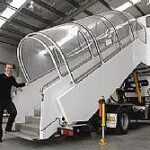Riding the roller-coaster
Whatever happened to Waikanaes Minx Shoe Girls? After a roller-coaster ride in business, the sisters are undaunted, wiser and looking forward to an exciting future.
By Warwick Halcrow.
From the highs of export success, awards and media adulation to stomach churning misfortune, the past seven years have been one hell of a roller-coaster ride for the Minx Shoe Girls Angela and Cushla Buswell.
In the last eight months we have been through some really big dippers, say the sisters who are now contemplating the future following the collapse of a crucial manufacturing deal in Fiji.
Minx Shoes grew from the purchase in 1999 of a family manufacturing business based in Waikanae.
There were lessons in dealing with family and valuing a business, says Cushla. We probably should have let the company close of natural causes. Tariffs were reducing, the products were basic me-too styles had we continued with that we wouldnt have survived as long as we did.
The Buswells ran with the existing regime for a year while developing their own contemporary collection and a new brand called Minx Shoes.
The result? A twenty thousand dollar investment and a highly publicised Wellington launch in 2000 featuring the worlds first Moki fish skin shoes.
Those that mattered most ignored the launch and publicity.
We could not find one single retailer who would buy the brand, recalls Cushla. We were told its too way out and wont fly in New Zealand.
Undeterred we flew to Australia and secured a deal with the largest retailer over there.
Acceptance by a major Australian chain resulted in domestic retailers taking on the brand and by 2002 the Minx Girls were regarded as a success story.
The reality, says Cushla, like many other so-called successes in the fashion industry, is that financially we were not. We needed more people that we couldnt afford.
Then came another big dipper the exchange rate shot up by more than 12 percent.
We couldnt afford to reduce our prices or add that much value to our product so we lost the Australian business.
When domestic retail orders levelled off the Buswells decided to focus on their end consumers. Through a survey form in every box of shoes and a website, they gathered valuable customer feedback.
We quickly learnt that it was dangerous to rely solely on retailers. A lot of consumer feedback contradicted what we were being told and customers were showing a lot of interest in designs that retailers wouldnt stock, explains Cushla.
These designs, incorporating uniquely New Zealand materials such as wool and paua, also attracted export orders from eight countries.
The Buswells discovered how popular their brand was with consumers and the value of building an ongoing relationship with them. The opening of their own outlet stores in Otaki and Onehunga followed in 2005.
Compliance costs
With their Waikanae factory employing 14 people the costs of production, particularly compliance, were beginning to bite.
We were paying exorbitant ACC fees and having to deal with some crazy OSH requirements, Angela explains. We had to spend thousands on one machine to make it safe, and once it was deemed safe we couldnt actually use it.
Add to that the cost of other compliance, GST, PAYE etc, and we were losing money every time we made a pair of shoes here we just couldnt carry on.
In August 2005, the perfect solution seemed to appear when an Auckland-based shoe company with a factory in Fiji approached the Buswells with a deal.
It seemed a good fit, Cushla explains. We thought that sounds fantastic; we ran samples and they were fabulous. They said there would be no problems with delivery as our volume only required two days production per month.
With an agreement signed, the Buswells closed the Waikanae factory in December 2005 and shipped materials and machinery to Fiji, expecting delivery of their first production run in January.
That was the beginning of our demise, says Cushla. Once you hand over your production to someone else you give away control over your business.
After six months of production delays and having quality materials turned into substandard product, we were under pressure, Cushla recalls their frustrations.
Ironically, a new agent in the US began opening up significant new opportunities.
Every time we had a glitch in Fiji we would get an order from America we kept thinking we just need to stay in there.
With more money ploughed into materials to remake already late deliveries and no resolution to the problems with the manufacturer they had to make a hard decision.
They could take legal action and win but our cashflow was completely buggered it wouldnt have solved our predicament, explains Cushla.
The Buswells settled for a final quality production run and the return of their machinery and unused materials.
Weve now learnt that plant isnt really worth anything, she adds.
When they announced the closure of Minx Shoes, they were amazed at the offers of support from suppliers, local business mentors and consumers.
We never truly realised the strength of our brand and the goodwill we had created until then.
New directions
We were in close-down mode and it made us think, with the blinkers completely off, where to from here? says Cushla.
After exploring the options the Minx Girls have decided to get off the manufacturing roller-coaster and out of the conundrum that has closed many small New Zealand companies.
Cushla explains; We cant afford to manufacture here, there isnt the quality in Fiji, that leaves China and we cant get the support of a large domestic retailer to generate enough volume for that.
Still in their early 30s, the Buswells have decided to take the best of what they have created their brand and design skills in new directions. They are considering an offer of a joint venture or designing for other companies in New Zealand and the US. NZB



